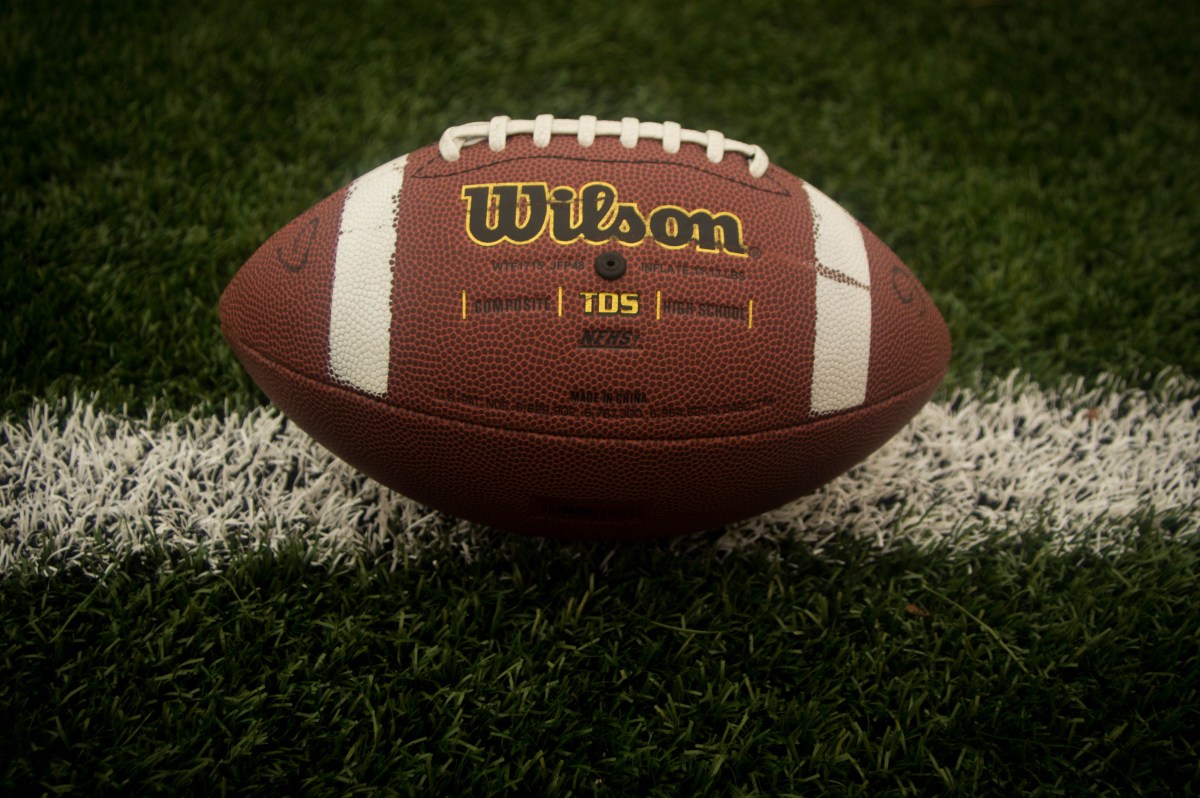By Nick Pasco
A federal appeals court this week approved a nearly $1 billion settlement in a class-action lawsuit thousands of retired professional football players filed against the National Football League, a ruling that came one month after an NFL executive admitted a link between a devastating brain disease and repeated blows to the head.
The court said the settlement was imperfect but fair, overruling a challenge by some players who argued that the deal didn’t cover potential victims of chronic traumatic encephalopathy (CTE), which some researchers say is caused by concussions. Yet despite the debate over the safety of football regularly making national headlines, parents on Long Island are increasingly allowing their children to playing at the introductory level.
“Of course, concussions and CTE is a serious deal,” said Benjamin Carey, president of the Long Island Youth Football Association (LIYFA) and vice president of the Northport Youth Football Club, who’s seen record enrollment over the past four years. “But the media blows it way out of proportion.”
He said the LIYFA has seen a 4-percent increase in enrollment in 2013, a 15-percent increase in 2014, another 4-percent increase in 2015 and the group is projecting another increase this year.
That’s because, Carey believes, parents are not unaware of the health risks but they appreciate football’s positives—“the life lessons the sport teaches”—such as promoting teamwork and helping kids overcome their fears. To mitigate health concerns, his organization, in partnership with the NFL, has implemented a “heads-up football culture,” he said, which “teaches kids the proper way to tackle, and also teaches coaches signs of concussions, and when it is necessary to pull a kid out of a game.”
He cites a study conducted by Datalys Institute on behalf of Pop Warner Little Scholars, Inc., a nonprofit organization that provides youth football in 42 states for children from ages 5 to 16 years old, that found “in youth football there is an absence of catastrophic head and neck injuries and disruptive joint injuries found at higher levels.” The study suggests that youth football has fewer injuries than soccer, bicycling or skateboarding.
“At the pro level, of course, it’s a dangerous game,” Carey conceded. “They know what they’re signing up for, and they get paid a lot of money to play this game. At the youth level, we are teaching these kids how to play the game the right way, and I am hoping to continue to spread this message across the Island to other clubs.”
Dr. Karl Friedman, a consulting physician who’s worked for 30 years with the Nassau County Safety Committee, which advises the county’s Athletic Association on its high school football rules, first wrote the concussion guidelines in 1990 and later revised them in the mid 2000s. He’s also a school doctor at five Nassau school districts as well as a high school football official. He cautioned against a rush to judgement on the concussion issue.
“There needs to be more research done before we jump to conclusions like we know everything about CTE,” Friedman said. “You look at ex-players like Troy Aikman, Boomer Esiason and Phil Simms—all who had multiple major concussions and yet all three you see and hear on Sunday broadcasting games. None seem to have any effects of CTE; Aikman is one of the smartest announcers out there.”
Friedman is aware of the sport’s dark side, too.
“Then you look at the tragedy with Junior Seau, and it just does not match up,” said Friedman, referring to Seau, the NFL All Pro who committed suicide in 2012 by shooting himself in the chest. The former linebacker had his brain donated to science, and researchers at the National Institutes of Health subsequently confirmed that it tested positive for CTE.
“How could there be so many extremes between the two?” asked Friedman. “This is why we need to continue to do more research and find out more.”
At present, Friedman believes that high school football has responded well to the concerns raised.
“With the numerous rule changes and limiting the practices on how much you can hit, you can see the intent to make the game safer,” he said.
Friedman has experience on the national level with the National Federation of High School Sports Medicine Advisory, where the concussion topic is not ignored.
“Everyone is aware of the issue,” he said. “And they are doing all they can with what they have to adjust and make the game safer. Still we need to learn more about the disease in order to continue to make strides.”
But there’s only so much doctors, referees and coaches can do to prevent injuries, considering the violent nature of the sport. In 2014, Tom Cutinella, a 16-year-old Shoreham-Wading River High School football player, died of traumatic brain injury after a John Glen High School defender hit Cutinella with an illegal helmet-to-helmet tackle. Cutinella was one of three high school football players in the nation to die in a one-week time-span.
The death sparked changes in local high school football, including stiffer penalties for helmet-to-helmet hits, pre-game safety announcements and new safety coaches. Cutinella’s parents are also speaking out to change the culture of celebrating hard hits.
“What made me say that the culture of football is wrong, having watched my son’s death live and first hand, was watching it on video,” Cutinella’s father, Frank, told ABC News. “The [John Glenn] player fist pumps like he had just done something good. I could hear some of their fans cheering. … You can check every rulebook out there from youth leagues to the NFL, and every one states you can’t lead with the crown of your helmet, or target another player, and five referees missed that play. It wouldn’t have brought my son back to life, but no flag was thrown.”
Despite the changes aimed at making high school football safer, some parents remain reluctant to let their kids play football.
“When you wrap players with protective padding and scream at them to perform for their team, they are going to throw their entire heart and soul into moving the ball down the field,” said Stefanie Baranek, a mother of three from East Islip. “Their fear of injury is minimized by the protective gear. Right up until they see stars and have a headache and/or nausea for days. Then it’s too late.”
If a player is fortunate enough to get back on their feet, there’s a good chance they’d head straight to a local hospital. In 2010, a Centers for Disease Control official testified before the Subcommittee on Health Committee on Energy and Commerce in the U.S. House of Representatives that emergency rooms treat an estimated 135,000 sports-and-recreation related traumatic brain injuries each year among children ages 5 to 18. No sport was singled out.
Despite injury concerns, local athletes seem satisfied with procedures meant to limit the risk of serious head injuries. Jack Brown, a junior varsity coach at Seaford High School, supports the rule that a player who’s had a concussion during a game can’t take the field, let alone practice with the team, until he’s been cleared by a qualified medical authority.
“I believe we’re taking the right steps to prevent more concussions in the future with our protocols before a student athlete can return to play,” he said.



































